Feeding and watering peppers are the main activities when growing the crop. The entire future harvest will depend on how correctly and timely the watering and fertilizing of the bell pepper was carried out.
|
A good harvest can only be obtained by using competent agricultural technology. |
Feeding and watering seedlings
Watering and fertilizing pepper seedlings depend on the conditions and quality of the soil. The newly emerged seedlings are placed on the windowsill and not watered, since during germination, being under the film, the soil is quite moist. In addition, the seedlings have very small roots and if you water them immediately, they will float with soil and die.
|
After the soil dries, water only with a syringe. Watering from a watering can is impossible, since a strong stream of water kills the seedlings. |
Watering is carried out as the soil dries out. If the soil feels slightly damp to the touch, watering is required.
You can check the soil moisture using a wooden stick. It is stuck into the seedling container and removed after 5 minutes. If the stick becomes wet, then watering is not needed. Leave the stick in the ground for a while just so that water, if any, is adsorbed. At depth, the soil may be dry, but surface moisture is sufficient for seedlings.
Watering and fertilizing seedlings
Do not fertilize until the first true leaves appear. But sometimes it happens that peppers do not form the first leaves for a long time, seeming to freeze in growth. This condition can last 10-15 days, especially in the north, where seedlings do not have enough sun in February-March.
|
After the seedlings have grown and become stronger, they carefully begin to water them from a watering can. |
This condition is quite dangerous, since due to prolonged growth retardation, the pepper may even die without forming true leaves. In this case, you have to do the first feeding of the seedlings.
At the beginning of the growing season, pepper requires nitrogen, but you cannot add urea or ammonium nitrate, since the seedlings will become very elongated, thin, long and will die, and for the seedlings this is certain death.
Therefore, they are fed with humates or complex fertilizers Malyshok and Ideal. After feeding, the seedlings will still stretch out a little, but this is then compensated by the thickening of the stem and the growth of leaves.
How to water and feed seedlings
If pepper seedling develops normally, then they begin to feed it after the first true leaves appear. The amount and composition of fertilizers depend on the soil on which the crop is grown. If it meets the soil requirements of pepper, then fertilizing is carried out once every 7-10 days with organomineral complex fertilizers:
- Ideal
- Sturdy
- Baby
- Agricola
- Uniflor growth
- Uniflor bud
10 ml of fertilizer is diluted in 5 liters of water and watered the seedlings.
If the soil is garden soil, which is not suitable for growing peppers (or any seedlings in general), then feed the crop with each watering.
The same feeding regime should be used in the northern regions on any soil, since here the seedlings do not have enough sun to grow. Fertilizing will stimulate plant development. 1 cap (5 ml) of fertilizer is diluted in 3 liters of water and watered over the seedlings.
|
Fertilizer for pepper seedlings |
Watering is carried out only with warm, settled water, the temperature of which should not be lower than 23-25°C. At colder water temperatures, plants do not absorb it well and suffer from drought, despite abundant watering.
Watering is carried out once every 2-4 days (depending on how quickly the soil dries).If the plants are placed on a south-facing window in direct sunlight, daily watering in small portions is possible, but the seedling containers must have drainage holes. If they are not there, then even in direct sun you need to water only every other day.
Feeding and watering after picking
After picking the seedlings, they are immediately watered abundantly, but not fed.
The plants are then removed from direct sun. If the plants have taken root, then after 2-3 days the soil in the seedling container will dry out and it is necessary to water them and place them on the windowsill.
If the peppers have not taken root, then the ground will be very wet even 3 days after picking. Then the seedlings are treated with the root growth stimulator Kornevin. To do this, 1 g of the drug is dissolved in 1 liter of water and applied to the root. The consumption rate is 50 ml per plant. If the peppers are weak, then 25 ml per plant.
|
After the seedlings take root, the watering and fertilizing scheme remains the same: once every 2-4 days, after dissolving the fertilizer in the required amount of water. |
If before picking, fertilizing was done once every 7 days, then after it they are done more often, since pepper requires an increased amount of nutrients to grow in a limited container volume.
Planting seedlings in the ground
In autumn, half-rotted manure, humus or green manure, increasing soil fertility, as well as superphosphate 40-50 g/m2.
Before planting, containers with seedlings are watered abundantly so that the plants can be easily removed. Add 1-2 tablespoons of ash to the holes and sprinkle with earth. In the absence of ash, potassium-phosphorus fertilizers are applied (potassium monophosphate, potassium sulfate + simple superphosphate (it dissolves faster than double superphosphate)).
Potassium chloride should not be added, as pepper does not tolerate chlorine.When planting seedlings, do not add organic matter or nitrogen fertilizers.
Then the holes are filled with water. After the water is absorbed, the seedlings are planted. Immediately after planting, it is watered abundantly again.
|
If the seedlings are planted in a greenhouse, then the next watering is carried out in a day, if outside, then after 2 days (in extreme heat, this can also be done in a day). The temperature of the irrigation water is not lower than 25°C. |
There is often advice on the Internet that after planting the plants do not need to be watered for 3 days. This is completely false. Once from a cramped container into a free environment, the roots begin to actively grow and branch, and they can only take root well in moist soil.
If the pepper is not watered for 3 days after planting, it will wither, and in the greenhouse it will dry out and turn into hay. Therefore, when growing in greenhouses, the crop is watered the day after planting, and then the next day. If the plants “hang their ears”, then urgently water them even in the hottest time and despite the direct sun. This will save the planted seedlings from death.
But you really don’t need to feed the plants.
No fertilizers, other than those applied during planting, are applied for 5-7 days after planting. Fertilizers stimulate the growth of above-ground parts of the plant, and the still undeveloped root system cannot cope with the needs of the tops.
Watering and fertilizing peppers in a greenhouse
Feeding and watering peppers before flowering and during the fruiting period are a little different.
How to properly water peppers before flowering
After planting, the peppers are watered depending on the weather. The general recommendation is once every 3-4 days, but you need to focus not on this, but on specific conditions.
Water saves plants from both cold and heat.If there are frosts, the crop should be watered abundantly and insulated the day before. In cold weather, watering is carried out once every 4-5 days, as the soil dries out slowly. Use only warm water.
Water the plants at the roots, being careful not to get water on the leaves and stems. As the crop grows, the lower leaves are removed; You can cut them when the soil is moist, but not wet. After this, the peppers are not watered for a day so that the wounds can heal and infection does not get into them.
Leaves should not be trimmed immediately after watering for the same reason. The watering rate for newly planted peppers is 1-1.5 liters per bush, for rooted ones - 3-5 liters.
|
Watering should be very moderate. More abundant watering is possible only on light sandy soils. |
As the crop grows, they begin to water not only at the root, but also between the rows, since the roots, as they grow, are able to absorb water at a distance significantly removed from the stem. In case of a long absence of watering, this can be a lifesaver for the pepper.
In hot weather, plants are watered every other day, and in the south, watering is possible every day or even twice a day (on light soils and in extreme heat) - in the morning and in the evening. In extreme heat, the pepper leaves droop down and press against the stem.
In this way, the crop reduces the evaporation of moisture from the surface of the leaves. Even if you water it at this time, the leaves will not rise, since the plant has “switched into economy mode.” If you water them in the morning or evening, there will be enough water until the next watering and the leaves will not drop.
Feeding peppers in the greenhouse before flowering
In the first half of the growing season, pepper needs more nitrogen and microelements, in the second half - phosphorus-potassium fertilizers and microelements.
The first feeding is done 7-10 days after planting the seedlings.Doing it earlier does not make sense, since the plants take root, and excessive stimulation of growth leads to an imbalance between the above-ground and underground parts of the plant, which has a bad effect on its further development.
|
Green fertilizer for pepper |
If the seedlings are frail or the peppers do not begin to grow for a long time after planting, then organic fertilizing with manure or green fertilizer. 1 glass of infusion is diluted with 10 liters of water and fed to the crop for good growth. It must be thoroughly watered first.
If peppers grow slowly during the initial growth period, they are fed with urea or ammonium nitrate - 1 tbsp/10 l of water. It must be remembered that organic matter enriches the soil with nutrients, and mineral water gives them directly to plants.
|
If the bushes are weak, then nitrogen is included in each feeding, but in smaller quantities. Before flowering, they need to gain green mass. |
If the pepper is strong and tall, then it requires less nitrogen, more phosphorus, potassium, and magnesium are required. Although it is impossible to do without nitrogen completely.
- After planting strong seedlings, the first fertilizing is done with potassium monophosphate or complex fertilizer for tomatoes and peppers.
- The second fertilizing on chernozems is done 3-5 days after the first; on poor soils, fertilizers are applied with each watering. Add complex fertilizers Agricola, Malyshok, and potassium humate.
Or, first they feed with urea, and after 3 days with a potassium-phosphorus solution.
Nitrogen is not used together with potassium and phosphorus, since in this case they are practically not absorbed. Plants can either be sprayed or watered with fertilizers.
|
Ash is well suited to replenish the deficiency of almost all elements (except nitrogen). The extract from it is watered or sprayed. |
After the peppers begin to grow in the greenhouse, the lack of microelements becomes very noticeable. When signs of deficiency appear, in addition to the main fertilizing, fertilizers (macro- or micro-) with an increased content of the missing element are applied.
How often to water peppers during flowering and fruiting
During flowering and fruiting, peppers require more frequent but moderate watering. At the slightest lack of moisture, it drops flowers, ovaries and fruits. In hot weather, water every other day or every day.
|
In case of a long absence from the dacha, the crop is given drip irrigation, since it cannot do without water even for a short time. The main guideline for watering is the drying of the top layer of soil. |
How to feed peppers in a greenhouse during flowering and fruiting
Peppers require more nutrients after flowering begins. She especially needs potassium, magnesium, calcium, bore.
Therefore, on poor soils, the dose of fertilizer is increased by 1.5 times. On chernozems, the application rate can be left the same, adjusting it only when signs of a deficiency of one or another element appear.
Feed peppers every 5-7 days. Use ash or combined fertilizers. When adding ash, nitrogen is added to every second fertilizing. When calcium deficiency occurs, calcium nitrate is added outside of the schedule.
|
At this time, the main thing is not to overfeed the plants with fertilizers, since if there is an excess of elements, the roots and growth point are affected. Therefore, it is important to adhere to the recommended frequency of fertilizing. |
The use of organic matter is acceptable on very poor soils. 0.5 cups of manure infusion or herbal infusion is diluted in 10 liters of water and applied to the crop.On rich soils and where manure was applied before planting, feeding with organic matter is not recommended.
Watering and fertilizing peppers outside
Watering peppers in open ground before flowering
Peppers outdoors are watered much less often than in a greenhouse, once every 3-5 days, depending on the weather. On the contrary, the crop in wet weather is covered with film to prevent waterlogging. And the rains at this time are cold, which adversely affects its growth.
In open ground, the watering rate is less than for greenhouse cultivation - 1-1.5 liters per adult plant. And only in hot and dry weather, if the soil dries out, is it increased to 2-2.5 liters. Water at the roots and only in case of drought, water between rows.
Even in extreme heat, the crop is watered no more than once every 2 days. Only in the south, when grown in direct sun, is daily watering possible.
It is better to make a canopy over the plot. This will protect the plants from excessive waterlogging during heavy torrential rains and from hail. If peppers are severely damaged by hail when they are young, they take a very long time to recover, which can lead to complete loss of the harvest.
After a hailstorm, they are sprayed with growth stimulants Epin or Zircon and fertilized with nitrogen fertilizers. Manure is not used because its effect is too slow, and a lost day means a lost harvest.
Feeding before flowering
Outside, before flowering, pepper needs more nitrogen fertilizing, and potassium-phosphorus fertilizers are used in the same quantities.
- 7-10 days after planting, the plants are fed with infusion of manure.
- The second feeding is done after 3-5 days with an infusion of manure or herbal fertilizer with the addition of 0.5 tbsp superphosphate and 1 tsp potassium sulfate per 10 liters of water.
- The third feeding is done with humates with the addition of ash.You can use complex fertilizers with sufficient nitrogen content.
|
Before flowering, peppers in the open ground are fed with potassium fertilizers in the same volumes as in the greenhouse. |
Such strong stimulation with nitrogen is needed to gain vegetative mass, since outdoors (especially in the central region) the crop grows very slowly and the period of fruiting is greatly extended. Even strong bushes need nitrogen to grow well. When entering fruiting, the outdoor crop should be more powerful than the greenhouse bushes.
In the south, nitrogen can be added to the first fertilizing, and then fed with complex fertilizers.
Feeding peppers during flowering and fruit set
In open ground during this period, plants require more nutrients than in a greenhouse. Therefore, fertilizing is carried out every 3 days.
Outdoors you need to combine organic and mineral fertilizers, especially in the middle zone, where plants lack heat and sun.
In the fourth feeding (the first after the start of flowering), add an infusion of herbal fertilizer (1 tbsp/10 l of water) and add 1 tbsp of superphosphate and 1 tbsp of potassium sulfate. The consumption rate is 1.5 liters per bush. After 3 days, microfertilizers or ash without nitrogen are added.
|
Organomineral fertilizer |
Next, they alternate organic matter with mineral fertilizers. Out of turn, only those substances are added whose deficiency begins to appear on the plant. In open ground there is a deficiency of calcium and magnesium. Usually, after fertilizing with organic matter, there are 3 phosphorus-potassium fertilizing.
In open ground, it is advisable to feed pepper only at the root. Fertilizers are applied throughout the season.
How to water peppers in open ground during flowering
Water the crop as the soil dries.Even after rains, watering is usually required, since short summer showers only add dust and quickly evaporate from the surface without penetrating the root zone. Humidity is checked by sticking it 10 cm into the soil. If the soil does not stick to it, then watering is required.
If plants begin to shed ovaries and fruits en masse with regular application of fertilizers, then check the soil moisture. If the soil is dry, increase the frequency of watering or the rate of water consumption per plant. When the soil is waterlogged, loosen it.
|
During heavy heavy rains, there is no need to water the bushes. During prolonged damp weather, a canopy is made over the peppers so that the ground does not become too waterlogged. |
In cold weather, water the crop once a week, and when it rains, do not water it at all. Irrigation water should be warm; if it is cold, the pepper will drop its ovaries and fruits. The same thing will happen if there is a cold rain.
Peppers damaged by hail are watered with a urea solution, and after 3 days with microfertilizer. Damaged peppercorns are removed and cannot be stored.
Is it possible to get by only with traditional methods of fertilizing?
No. Pepper is a very demanding crop when it comes to fertilizers. Ash, herbal infusion, eggshells and other folk remedies cannot fully satisfy his need for nutrients.
Even on rich soils, additional application of mineral fertilizers is required, although you can do without the use of urea. On poor soils, crops cannot be grown at all.
If additional phosphorus fertilizers (in addition to ash) are not applied, the plants will shed flowers and ovaries en masse, and the remaining fruits ripen very slowly. Phosphorus fertilizing begins with planting seedlings in the ground.
In the northern regions, it is impossible to do without additional calcium supplements, although in the south the vegetable may not suffer from its deficiency.
And no region can live without manure. If there is a shortage of food, there will not be a good harvest.
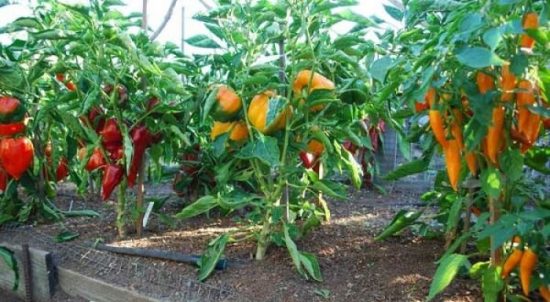
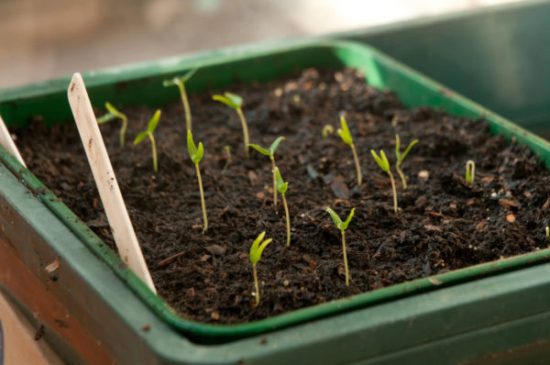
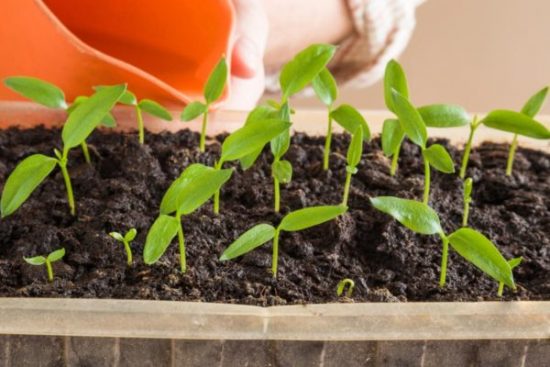
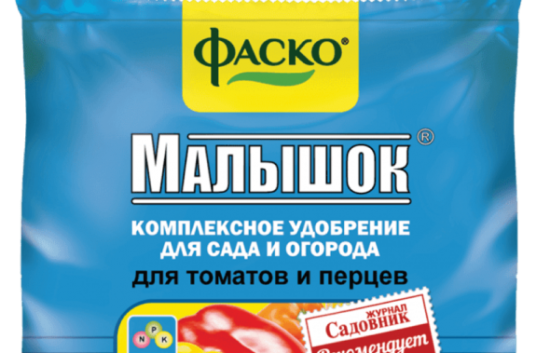

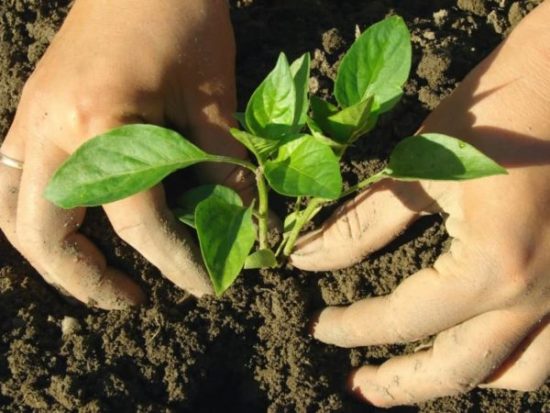
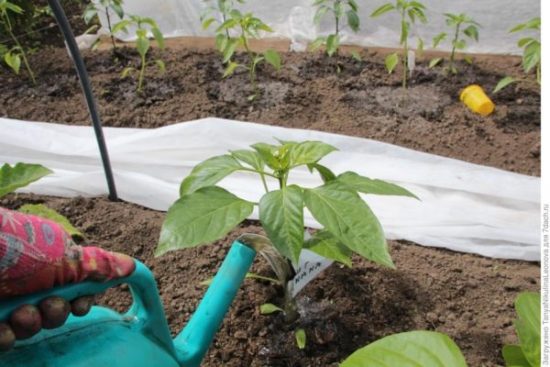
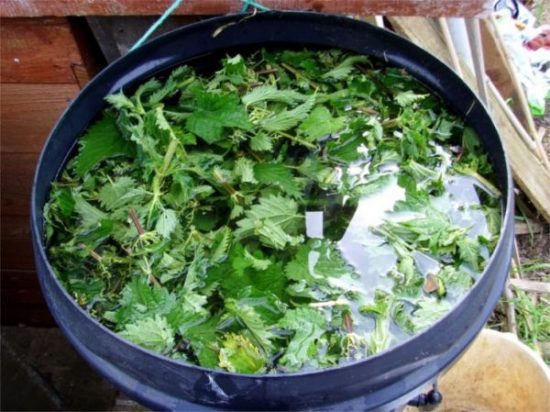
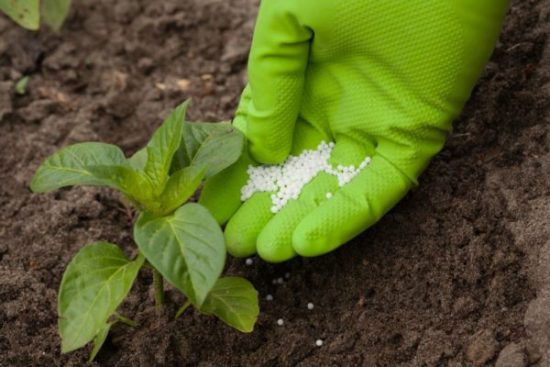
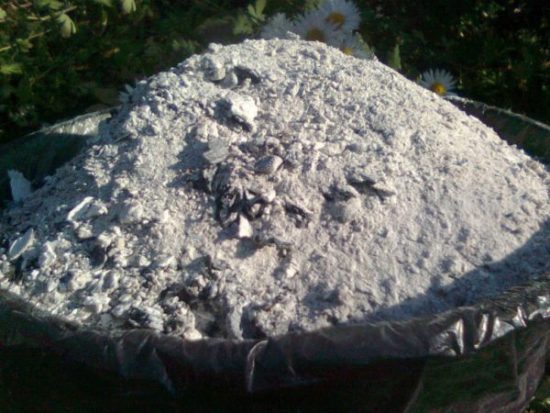
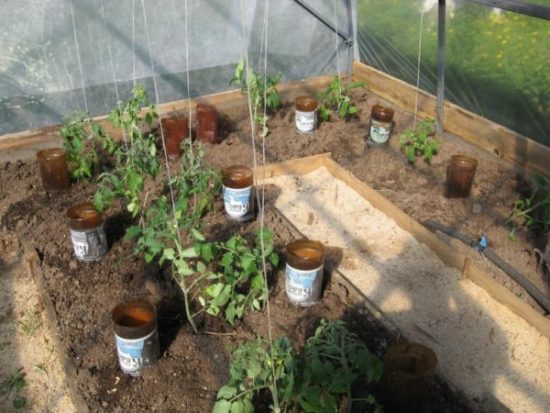
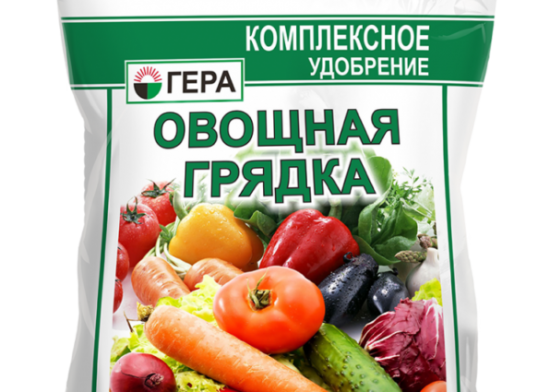

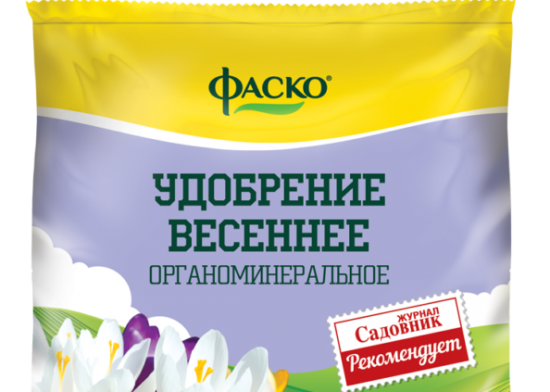


 (7 ratings, average: 4,00 out of 5)
(7 ratings, average: 4,00 out of 5) CUCUMBERS NEVER GET SICK, I'VE BEEN USING ONLY THIS FOR 40 YEARS! I SHARE A SECRET WITH YOU, CUCUMBERS ARE LIKE THE PICTURE!
CUCUMBERS NEVER GET SICK, I'VE BEEN USING ONLY THIS FOR 40 YEARS! I SHARE A SECRET WITH YOU, CUCUMBERS ARE LIKE THE PICTURE! You can dig a bucket of potatoes from each bush. Do you think these are fairy tales? Watch the video
You can dig a bucket of potatoes from each bush. Do you think these are fairy tales? Watch the video
 How our fellow gardeners work in Korea. There is a lot to learn and just fun to watch.
How our fellow gardeners work in Korea. There is a lot to learn and just fun to watch. Eye trainer. The author claims that with daily viewing, vision is restored. They don't charge money for views.
Eye trainer. The author claims that with daily viewing, vision is restored. They don't charge money for views. A 3-ingredient cake recipe in 30 minutes is better than Napoleon. Simple and very tasty.
A 3-ingredient cake recipe in 30 minutes is better than Napoleon. Simple and very tasty. Therapeutic exercises for cervical osteochondrosis. A complete set of exercises.
Therapeutic exercises for cervical osteochondrosis. A complete set of exercises. Which indoor plants match your zodiac sign?
Which indoor plants match your zodiac sign? What about them? Excursion to German dachas.
What about them? Excursion to German dachas.